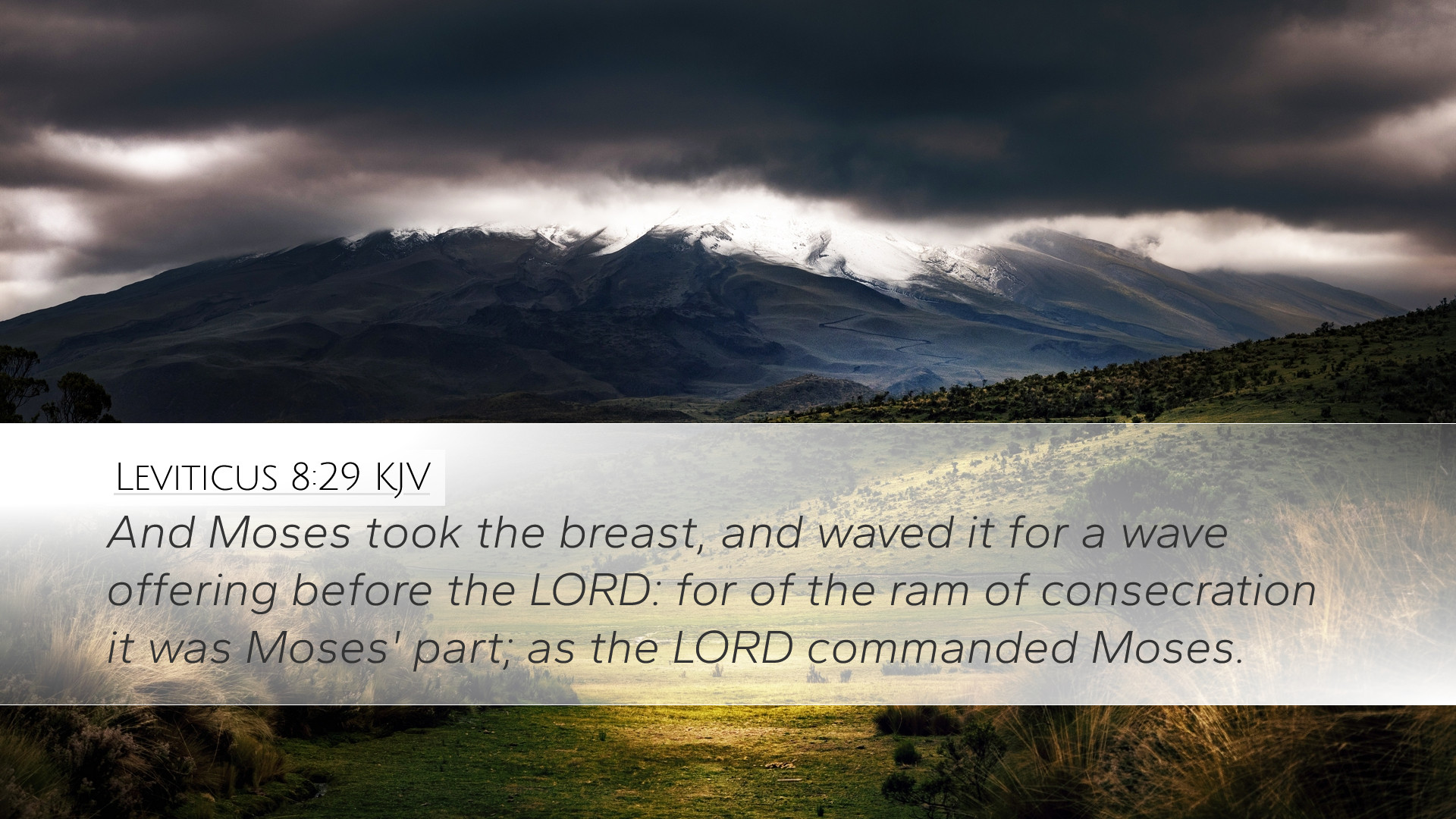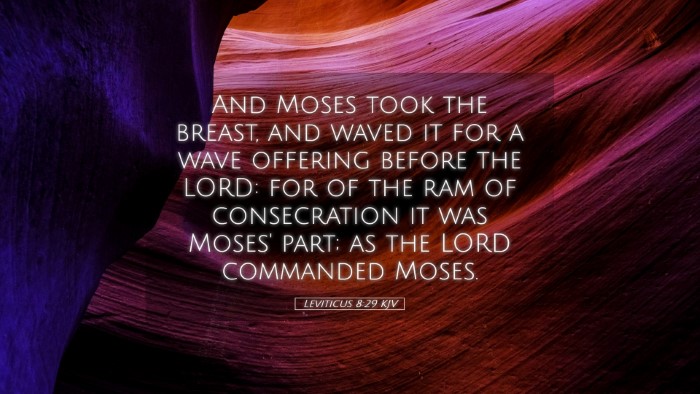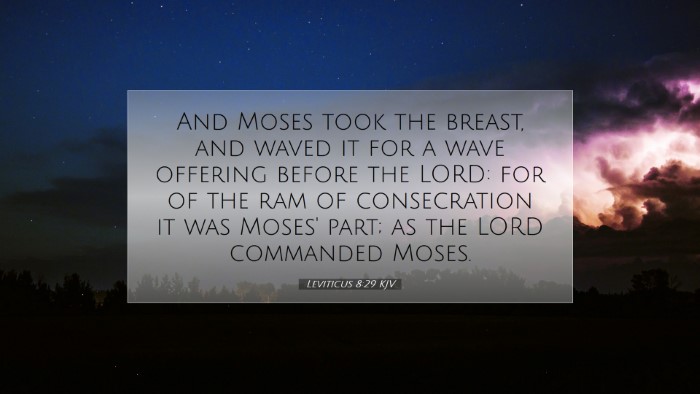Commentary on Leviticus 8:29
Scripture Reference: Leviticus 8:29 - "And Moses took the breast, and waved it for a wave offering before the Lord: for of the ram of the consecration it was Moses' part; as the Lord commanded Moses."
Introduction
The verse from Leviticus 8:29 serves as a significant point in the consecration of Aaron and his sons as priests. This directive from God outlines the importance of the ritualistic practices within the Hebrew faith and highlights the role of Moses as the mediator between God and the Israelites.
Contextual Analysis
In understanding Leviticus 8:29, it is crucial to consider the larger context of its immediate surroundings (Leviticus 8), wherein we find the instructions regarding the ordination of Aaron and his sons. The chapter is crucial in delineating the responsibilities and consecration rites of the Levitical priests.
Historical Background
Leviticus is part of the Torah, attributed to Moses, and documents the laws and rituals that establish the covenant between God and Israel. The events described in Leviticus 8 take place shortly after the Exodus from Egypt, underscoring the formative period of Israel’s identity as a nation set apart by God.
Thematic Insights
This verse encapsulates several significant themes:
- The Role of the Priesthood: The act of waving the breast signifies the priest's function as an intermediary. The offerings symbolize the people's recognition of God’s sovereignty.
- Obedience to Divine Command: Moses’ adherence to God's instructions serves as a model for believers' fidelity to divine guidance.
- Symbolism of Offerings: The waving of the breast offering represents both a gift to God and God's acceptance of the consecrated priests.
Commentary from Public Domain Sources
Matthew Henry
Matthew Henry interprets this verse within the broader context of priestly ordination. He remarks on the significance of Moses taking the breast and waving it before the Lord, indicating that it was an action of elevation and public acknowledgment of God’s choice of Aaron and his sons for the sacred duties of the priesthood. This act underscores the critical principle that service to God must be done in the prescribed manner and with sincere intent.
Albert Barnes
Albert Barnes elaborates on the ceremonial aspects of the offerings. He notes that the wave offering is an acknowledgment of God’s provisions and blessings. Barnes emphasizes the importance of the “breast” in this context, symbolizing the heart and inner life of the priest, which must be devoted to God. This offering illustrated the special relationship between God and the individuals He has set apart for His service. Furthermore, Barnes explains that the distinction of Moses in receiving the breast indicates the necessity of divine selection in worship, reinforcing the importance of God’s sovereignty in calling individuals to ministerial roles.
Adam Clarke
Adam Clarke provides insight into the symbolic actions represented in this verse. He notes the significance of the wave offering as a representation of presenting oneself before God. Clarke emphasizes that this ritual not only signifies the devotion of the priests but also serves to unify the worshippers in their communal objective of glorifying God. Moreover, Clarke insists that these rituals serve a dual purpose: they affirm God’s covenant with Israel and educate the people about holiness and the necessity of proper conduct in worship.
Practical Applications
The verse and its related commentaries yield several practical applications for modern readers and church leaders:
- Understanding Spiritual Authority: The Levites acted under divine appointment, reminding contemporary believers of the sovereign call to ministry and the importance of recognizing spiritual authority.
- Consecration of Service: The act of waving the breast implies a dedication of service to God, prompting individuals today to consider their commitment and consecration in their ministries.
- Importance of Rituals in Worship: While the Old Testament rituals differ from New Testament worship, the essence of approaching God with reverence and intentionality remains crucial.
Conclusion
Leviticus 8:29 encapsulates key elements of worship, priesthood, and the covenantal relationship between God and Israel. As seen through the insights of Matthew Henry, Albert Barnes, and Adam Clarke, this verse serves to deepen our understanding of biblical rituals and their significance for contemporary faith practice. It invites pastors, students, theologians, and scholars to reflect on the sacredness of their call and the nature of their service to God and His people.


